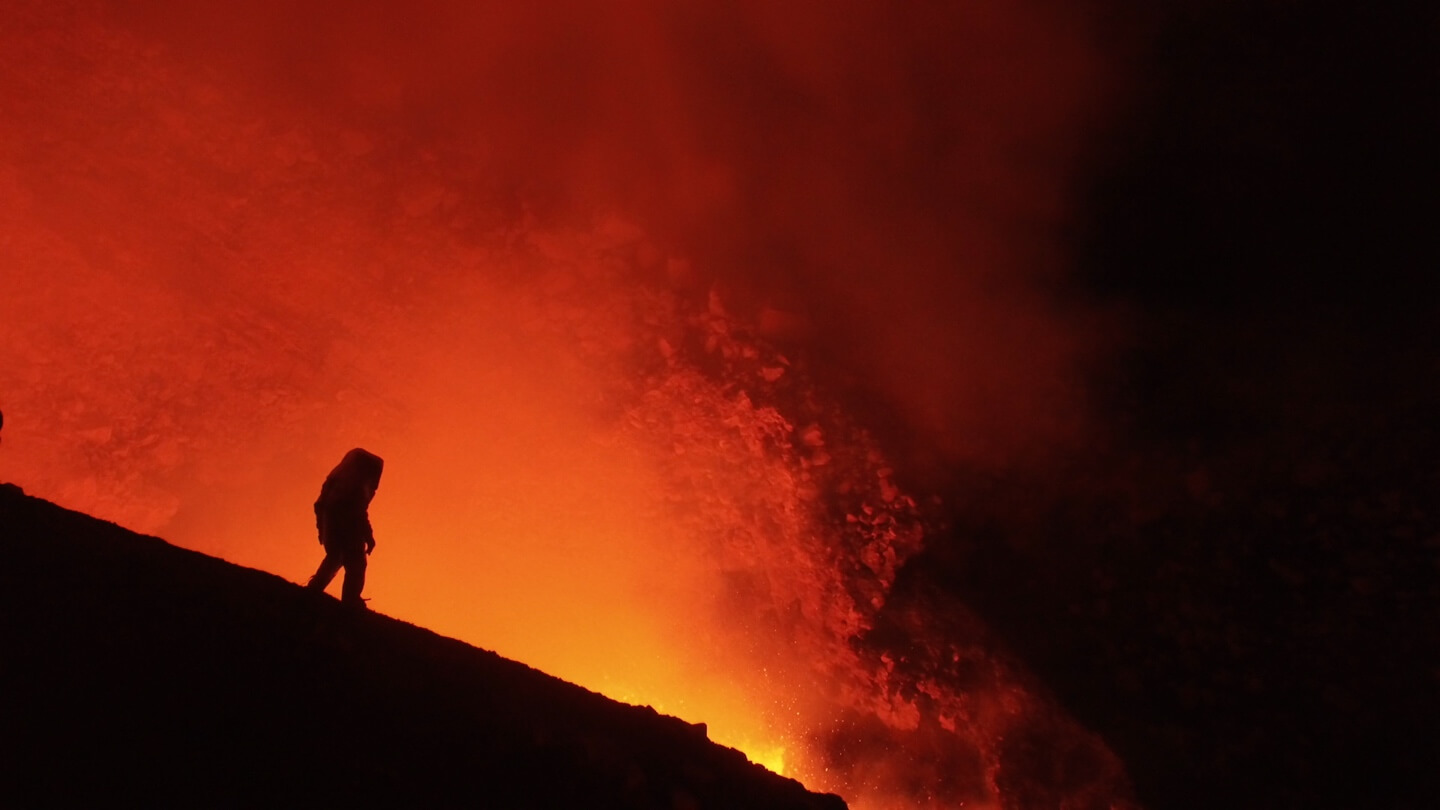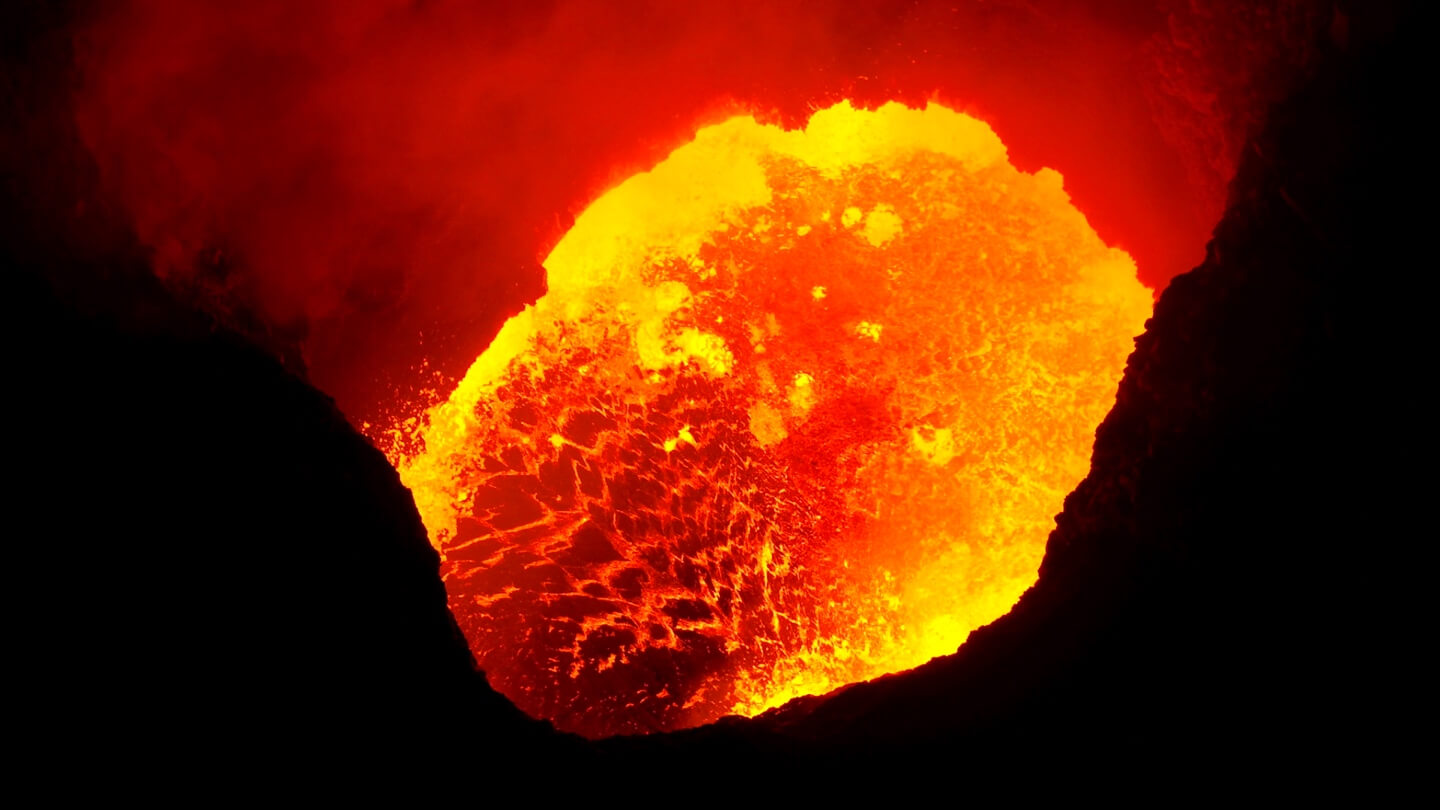Dive into the 'Mouth of Hell': Virtual Tour Takes You Inside an Active Volcano

An active volcano is a dramatic sight. Volcanoes — hills or mountains in Earth's crust that form over fissures opening directly into the mantle — can hold vast lakes of molten lava in their craters. And when they erupt, they can eject lava flows and fountains, generate earthquakes and avalanches, or produce steam and ash plumes that may tower for miles overhead, offering an awe-inspiring glimpse of the dynamic processes at work deep inside our planet.
All that can be dangerous (not to mention downright scary) to see up close. But now, you can peek at the innermost workings of an active volcano in Nicaragua, with the help of the immersive website called Digital Volcano. The experience was designed by creative agency Gin Lane and represents data gathered by a team of volcano experts with the support of the government of Nicaragua and General Electric (GE).
To create the online "virtual volcano" experience, scientists rode a zip line into the Masaya volcano, which stands about 2,000 feet (610 meters) tall and is located about 12 miles (19 kilometers) from the Nicaraguan capital of Managua. Their descent of 1,200 feet (365 meters) terminated above a lava lake, where temperatures reached 1,800 degrees Fahrenheit (1,000 degrees Celsius). Once in position, the researchers deployed a battery of sensing and recording technology to collect data that included temperature, gas emissions and atmospheric pressure, while cameras caught some of the closest views of a lava lake ever captured on video. [Big Blasts: History's 10 Most Destructive Volcanoes]
The team of experts visited Masaya in 2016, planting 80 sensors at different depths in the volcano's crater, and documenting the process along the way, according to a report on the GE website.
Digital Volcano is a feast for the eyes, with stunning video and photos of Masaya, the rugged landscape surrounding it and the fiery lava lake within.

Interactive layers within the website offer footage of the team's site exploration and preparation, display 3D views of equipment, and tell the step-by-step story of how the scientists constructed and operated the apparatus that would transport them safely into the so-called "Mouth of Hell," at the volcano's heart, where the riskiest part of their sensor installation and data collection would take place.
But Digital Volcano provides more than just an insider's perspective from the depths of a volcanic crater. The project also offers valuable insights on data collection in extreme environments, and provides the data as open access so that researchers worldwide can analyze it independently and thus better understand and predict how volcanoes behave, GE representatives said.
Sign up for the Live Science daily newsletter now
Get the world’s most fascinating discoveries delivered straight to your inbox.
Original article on Live Science.

Mindy Weisberger is an editor at Scholastic and a former Live Science channel editor and senior writer. She has reported on general science, covering climate change, paleontology, biology and space. Mindy studied film at Columbia University; prior to Live Science she produced, wrote and directed media for the American Museum of Natural History in New York City. Her videos about dinosaurs, astrophysics, biodiversity and evolution appear in museums and science centers worldwide, earning awards such as the CINE Golden Eagle and the Communicator Award of Excellence. Her writing has also appeared in Scientific American, The Washington Post and How It Works Magazine. Her book "Rise of the Zombie Bugs: The Surprising Science of Parasitic Mind Control" will be published in spring 2025 by Johns Hopkins University Press.










